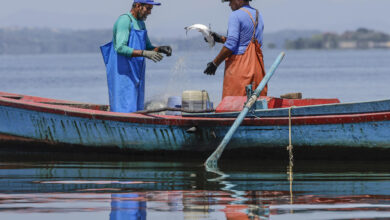Main Plastics That We Should Avoid Using Immediately
More than 400 million tonnes of plastic are produced every year on Earth, and only 9% of plastic waste is recycled. The remaining 91% ends up in landfills or oceans.

The Woman Post | Catalina Mejía Pizano
Listen to this article
When speaking about plastics, we must start by highlighting that 80% of the ocean’s pollution is caused by humans. Also, 44% of all the plastics that have been produced in the world, have been manufactured from the year 2000. But what are the harmful effects of plastics? In the first place, the environment is a victim of plastic, since 850 million tonnes of greenhouse gases are generated every year in their production. On the other hand, when it comes to animals, more than 700 species in the world have been affected by plastics. Sea turtles are among the species that have suffered the most since at least 52% have ingested plastic products that end up in the oceans.
However, the environment and animals are not the only ones affected by plastic pollution. During the last years, scientists have found that chemical particles in plastic also affect human health. For instance, a recent study confirms that the chemical molecules in plastic water bottles could affect the endocrine system.
Let's first mention the plastic products that you should avoid to protect the oceans and your health.
1. Plastic Balloons
A study by The Commonwealth Scientific and Industrial Research Organisation (CSIRO) revealed that balloons are among the top three most harmful pollutants that can threaten marine life, along with plastic bags and bottles. It is also worth mentioning that no balloons are fully biodegradable, not even latex balloons. Many animals may mistake latex balloons for food, and their intestine can be blocked.
2. Styrofoam
This material is made out of Styrene, which has been mentioned by the International Agency for Research on Cancer as a possible carcinogen to humans. As we all know, styrene can leach into food and drinks served in styrofoam containers. As if these weren’t bad enough, when styrofoam is exposed to sunlight, it creates dangerous pollutants that deplete the ozone layer and contaminates landfills. It also breaks into small pieces that can choke animals.
Also read: "NOW YOU CAN FEEL GOOD ABOUT FASHION"
3. Plastic Food Wrap and Plastic Food Containers
Bisphenols can hide in plastics we use to store food. Phthalates are also dangerous and known as the “everywhere chemical” since it is added to plastics to make them soft. They are found in plastic toys, food wrapping, and personal care products, while bisphenols are found in water and food bottles, food containers, eyeglass lenses, and soda cans. Both chemicals can act as endocrine disruptors, interfering with the action of hormones in our bodies.
4. Store Receipts
These types of receipts tend to be printed on thermal paper which contains bisphenols that can be absorbed by our skin. Next time you take your children to the store, be sure not to let them manipulate these receipts!
5. Personal Care Products
Beware of cosmetics, shampoos, body wash, lotions, and powders. Most of them contain phthalates. One solution is to find organic alternatives or even better, make your own personal care products!
It is also important to avoid heating plastics since evidence suggests that warming plastics by heating them in the microwave or using them for hot food and drink increases the probability of harmful chemicals leaching into your food. Your body and the planet will thank you!




